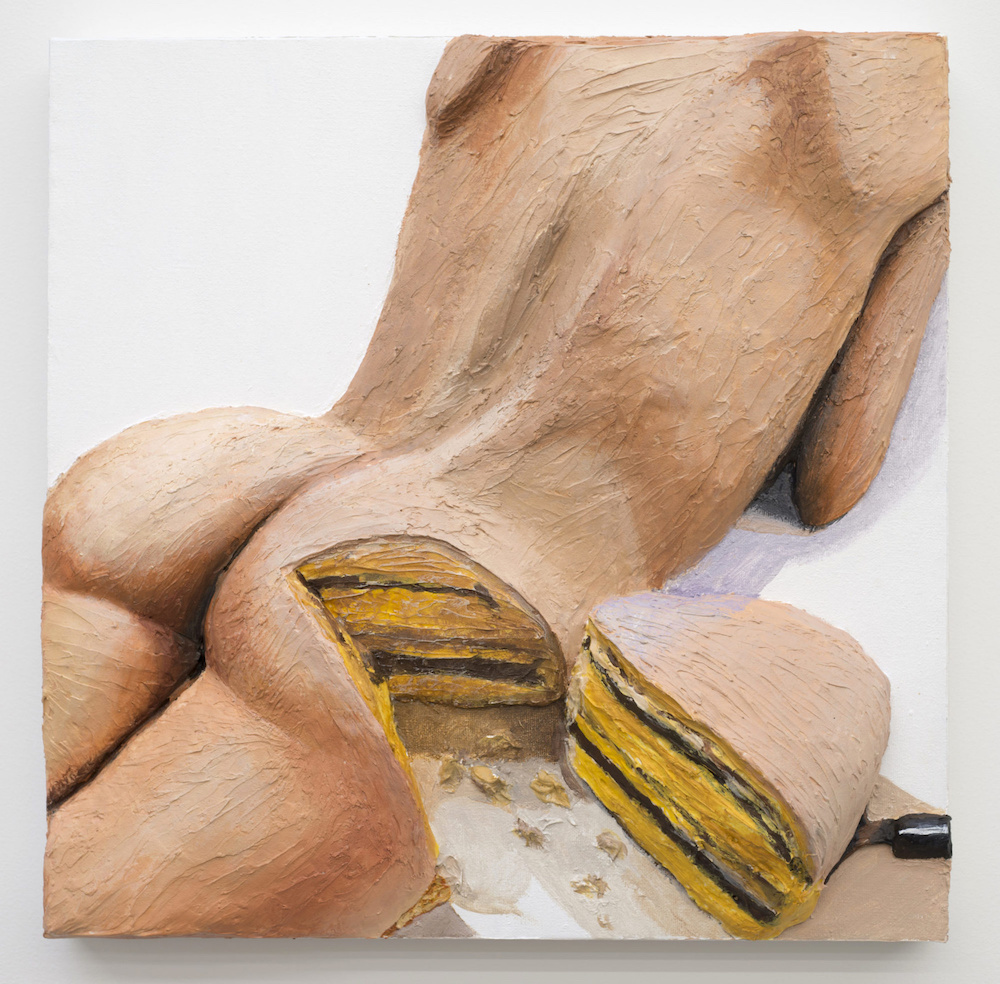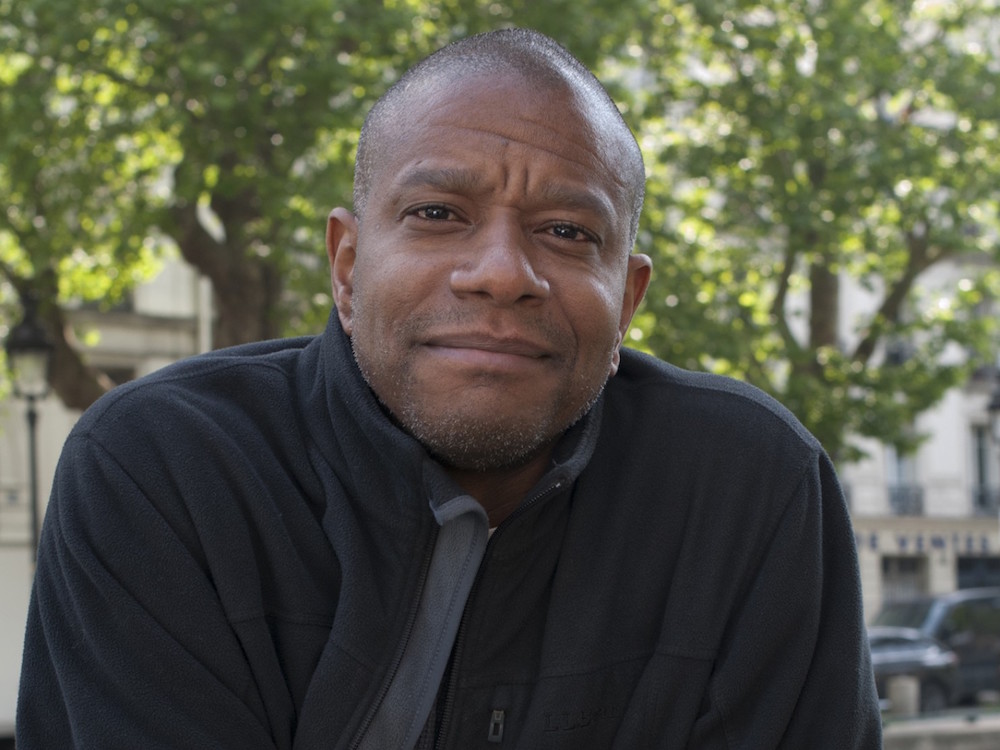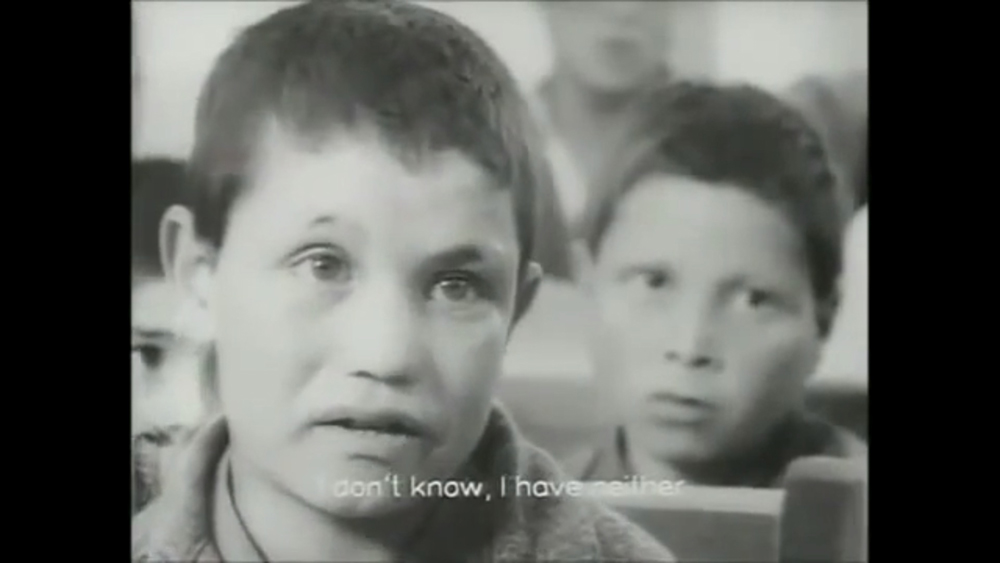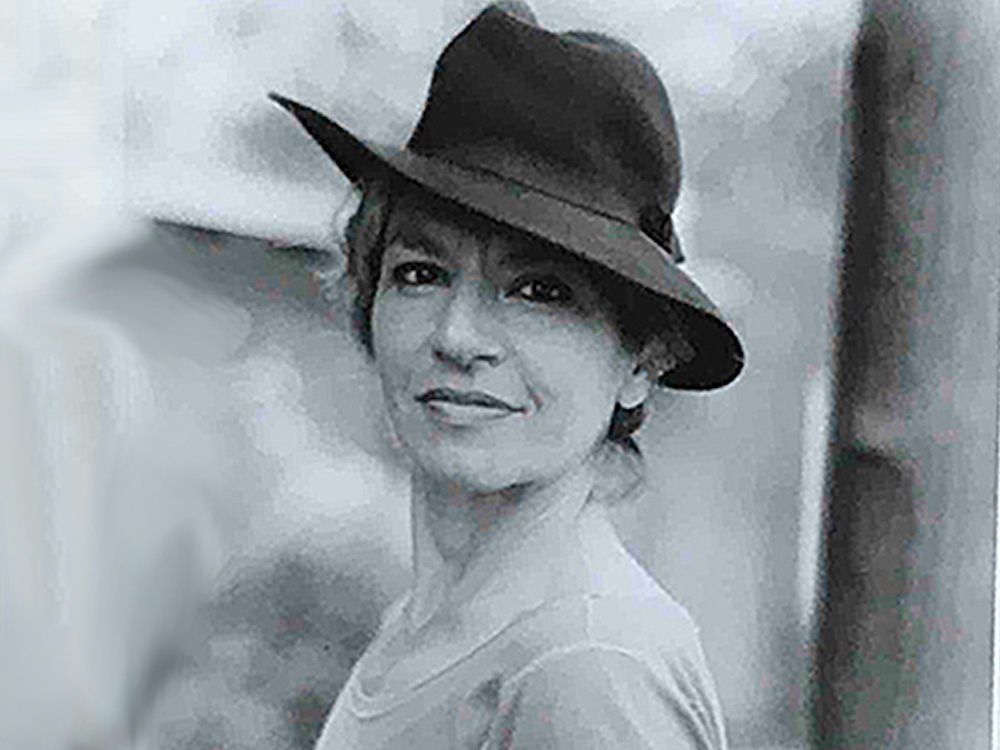No American novelist riffs like Paul Beatty. His superlative novel Slumberland established his comic mastery years before he won the Man Booker Prize in 2016. Set in Berlin just before (and after) the fall of the Wall, Slumberland is the picaresque tale of Ferguson W. Sowell, a.k.a. DJ Darky, a Los Angeles native on a quest to find the Schwa, a mysterious East Berliner Schallplattenunterhalter who can “ratify” our narrator’s perfect beat. True to the genre of expatriate lit, DJ Darky leverages the wisdom afforded an auslander’s perspective, as Germany’s “multikulti” breeziness becomes a lens on race relations in the U.S., and on othering more generally. The novel exploits the tragicomic potential of the reversals, slurs, and embarrassments that might befall a black man in Berlin—a “jukebox sommelier” with a penchant for tanning booths, our narrator eventually endeavors to rebuild the Wall—but the boldest joke might be subtly, cheekily metafictional: forget dancing about architecture, Beatty’s written a syncopated novel about sound.
I picked up Slumberland after finishing the German philosopher Byung-Chul Han’s book-length essay The Agony of Eros. Though very different in tone, together the two make a kind of contrapuntal harmony. Like Slumberland, The Agony of Eros is rife with asides on Heidegger and porn. But where DJ Darky eventually aims to make otherness “passé,” Eros takes the opposite tack. Han is concerned with preserving the idea of the Other as a check on contemporary narcissism, according to which “everything is flattened out into an object of consumption.” In other words, by acknowledging the sovereignty of another person as other, not mine—by resisting the temptation to translate difference into familiar, “consumable” terms—we delineate a limit on the Self. It’s as earnest and compelling a diagnosis for social malaise, romantic or otherwise, as any I’ve come across. But as we search for a cure, I’m reminded of another impulse behind Slumberland: often it’s in the face of despair that we reach for the joke. —J. Jezewska Stevens
I fetishize Iceland and grew up playing three-handed hearts with my parents, so it makes sense that my go-to online time waster would be cardgames.io, a free, ad-driven website programmed by Einar Egilsson, an Icelandic geek with a twenty-four-karat sense of humor. Of the thirty-odd diversions on his site, my favorite is the three-handed Icelandic trick-taking game called Manni, of which there exist many local and regional variations. (Manni is the indefinite dative singular of maður, which, according to Einar, translates to something like chap; it’s the name given to the pile of cast-off cards collected before each hand begins.) Six possible hands are chosen by a card draw; with several layers of randomness and bizarrely complex scoring rules, it’s not exactly blackjack, so it’s a good game to play while slightly distracted. The majority of Einar’s customers are American (and, charmingly, he’s named the built-in opponents Mike and Bill), but I like to pretend I’m in a Reykjavik bar with my imaginary friends Thór and Aðalfríður, shouting kúkalabbi! whenever I lose. —Sarah Manguso
My wife is a choreographer and dancer, which means I have seen more dance in the past few years than most people will in a lifetime. Fortunately for me, I love dance. I do! But I wasn’t always such a fan. For most of my life, I hadn’t experienced much dance beyond The Nutcracker, and so I didn’t know how to enjoy it. I was always looking for (and never finding) the hidden story behind the movement. Well now I am here to gently tell my younger self: wrong, wrong, wrong! I find that most dance is best enjoyed the way you might enjoy a poem, painting, or piece of performance art—not by searching for some literal narrative, but by appreciating the emotional experience the art elicits. Lately I have become particularly obsessed with short dance films, in large part because my wife has been choreographing a series of them with her sister, who is a director. Their very latest, “Yellow,” is five gorgeous minutes of emotional entanglement set in the swaying heart of a California superbloom. Experience the film and enjoy, allowing the movement, the colors, and the score to wash over you at once. —Nick Fuller Googins

Gina Beavers, Cake, 2015, acrylic on canvas. Courtesy the artist and GNYP Gallery. Photo accessed on http://www.moma.org.
In the current culture of Instagram boasting, which promotes braggarts, narcissists, and exhibitionists (all words that once suggested something negative), Gina Beavers puts up an uncomfortable mirror to us all. Her physical and visceral paintings in “The Life I Deserve” at MoMA PS1 show us our recent behavior in a way that is brutal and unforgiving. “Makeup tutorials,” “food porn,” and “selfies” become the framework and titles of works in the show. She manipulates her wide array of materials to transform the subjects into something grotesque and desperate. Meat seems deader, makeup feels like caked-on plaster, and flesh feels thick and clumsy. Through formal shifts she transforms the content of these images into uneasy, powerful work. Finally, something good to come from social media. —Francesca DiMattio
Lucas de Lima’s recent poems in the Brooklyn Rail touched the middle of me. Perhaps this is because what is inside of the body appears on the outside: a “subsurface” turned “inside out / with a finger & traced.” This is an intestinal, sexual, and biographical form of writing that wakes me up from a deep slumber. What I also love about de Lima’s work is the rotating channel he makes between shit and magic: the sun a kind of hole, and the body’s hole a “pierced horizon.” “Somehow i have to stay human as i bottom in the dark,” de Lima writes, evoking the tenderness and violence that is a hallmark of his poetry, its vegetal-animal animosities and pleasures. In the tricortical territory of Cosmic Bottom, we investigate what it is “to become rosebushes, emitting shades of red.” We meet “a horse who swallows & / doesn’t want to breed.” These poems had the effect (for me) of engravings made on a slaughterhouse floor, a connection already made by Rimbaud yet brought to the present and erected on a livid verge by Lucas de Lima, who … well, here you go:
i only shed light for the most missionary of tops, he who unearths me
like rilke whispering
you must charge your hole.
you must give them life.
I first discovered Bhanu Kapil’s blog, then titled Was Jack Kerouac a Punjabi?, in 2009, when I was an unpublished writer living in Akron, Ohio, looking for a kindred community of writers. I still remember the thrilling intensity and energy of her sentences, in these notes of writing the life of a writer, and toward her novel that became Ban en Banlieue (Nightboat Books). In the past few months, feeling mournful for that time when so many writers I love were writing to each other in what seemed like a free space, resistant to capitalism, in semi-anonymity, I have returned to Kapil’s near-daily meditations. They are both performance and erasure of the writing self, fragments towards the ongoing practice and project of literature that incubates and continues the books. More recently Kapil’s blog, now named The Vortex of Formidable Sparkles, has meditated upon the racism and alienation of creative writing institutions and communities, precarity and care labor, and the devastating shards of the ghosts of family and personal histories (as do her ghost stories in the Spring issue of The Paris Review), all throughout writing so beautifully the ephemerality of her daily life. After a decade of reading her work, I am certain that Bhanu Kapil is one of our greatest living writers: her books, performances, and blog actively interrogate and resist structures of power and coloniality, in modes at once playful, angry, and tender. —Kate Zambreno
My family moved to America when I was two and a half, and my brother, who was seven years older than me, was immediately thrust into English-speaking schools. My parents banned speaking Farsi in the household as a way to accelerate his acclimation, and as a consequence, our Farsi stagnated and wore away from disuse. Recently, I have thrown myself into (re)learning Farsi. I can’t go back to Iran, for a variety of reasons, so instead I have software, workbooks, podcasts, flashcards, and regular conversations with native speakers.
One of my favorite parts of this process has been immersing myself in Iranian cinema, slowly moving through the titans of Persian film—Kiarostami, Makhmalbaf, Farhadi, Milani. Right now, the movie I can’t stop thinking about, the one I have been writing and painting and dreaming about, is Forough Farrokhzad’s 1963 masterpiece “Khaneh Siah Ast” (“The House Is Black”). Farrokhzad is arguably the greatest Persian poet of the twentieth century, and this, her only film, takes us into the Bababaghi Hospice leper colony in northern Iran. The whole documentary is only about twenty minutes long, but in that time we see dozens of the residents as they play, sing, smoke, get medical treatment, and go to school. The footage is gorgeously overlaid with voiceovers from Farrokhzad’s own poetry, as well as bits taken from the Quran and the Old Testament. In one rending scene, a teacher asks a boy why we should be grateful to have mothers and fathers. The boy responds, “I don’t know. I have neither.” Stymied, the teacher moves to another boy, asks him to name a few beautiful things. He replies: “The moon. The sun. Flowers. Playtime.” The teacher then asks a third boy—who, like many of the other children in the room, is visibly marked by leprosy—to name a few ugly things. He responds: “Hand. Foot. Head.” —Kaveh Akbar
I see a bandwagon, I run the other way. And yet: I’ve been reading Bette Howland, whose stories have been recently “rediscovered” and collected in a book called Calm Sea and Prosperous Voyage, published earlier this month by A Public Space Books. As a writer who prides himself on having been born and raised in Chicago (okay born at Michael Reece, raised in Highland Park, shoot me, my parents wanted a lawn) … As I was saying, as a writer who prides himself on having been born in Chicago and who still curses his parents for relocating to the infernal suburbs (which is like being born on Saturn and exiled to a ring of Saturn) … Anyway, yes, I was saying, as a writer etc., etc., I’m more than a little ashamed that I hadn’t come across Howland before. All those years of scouring the great city’s bookstores, and I never, ever, found Bette Howland? How is it possible? And yet writers get drowned out, don’t they, by all the noise. Voices that aren’t silent, that were never silent, go nonetheless unheard. I’m a little uncomfortable with the idea of rediscovery in the first place. At what point does a writer go from being a writer to being a rediscovered writer? Weren’t Bette Howland’s words here all along? She’s not some brontosaurus dug up out of the loam by archeologists from the Field Museum. Is loam the right word? Anyway, she was a writer who wrote stories, living stories, whether they were being read or not for the past couple of decades. How good are they? Here are two examples out of ninety thousand I could give.
What the family needed was some fresh stock, “hybrid vigor.” They were “sick of their washed out New England blood.” Thus Papa, thrilled at the prospect of having a Jewish daughter-in-law breeding with the race – for he believed that all Jews were cultured, cosmopolitan, intellectual, and rich. I had never run into this wacky Puritan Jew-worship before, for obvious reasons: I didn’t fit the description and I didn’t know anybody who did.
This a quote from Howland’s glorious story “Blue Chicago,” and it captures a phenomenon I haven’t quite seen expressed so succinctly. Call it anti-Semitism with a positive spin. All the creepier for being an unwelcome, backhanded compliment. You people really do excel don’t you! Except, it’s not true for Howland’s character and her character’s family, having come from, as she says, a family of failures, and it’s never been true for Jews in general. To take away our right to be failures is to take away our humanity. I know this up close. My own family of Jews specializes in going out of business.
Second example: Howland on loneliness. It’s been covered, true, but aren’t we, every moment, in need of another iteration? This, from the story “Aronesti,” just after a moment where a lonely guy has hung up the phone after trying to engage someone who’d called the wrong number in a conversation. Remember wrong numbers? When you picked up the phone and there was just this person on the other end that could have been anybody?
Maybe eternity was like that. Disembodied voices. “Who are you? Who are you? Is that you? Where are you?” Nice thought. You could look a long time. If you wanted someone. Oh God, he wanted someone.
Buy this book. If there’s a Howland bandwagon, and there should be, hold me a seat, or I’ll stand. No problem, I’ll stand. And yet: Can I insist? She’s not a rediscovery. It’s incumbent on us to listen to the voices who have been speaking all along. We just haven’t been paying enough attention. Melville tells us that Ishmael swam through libraries. And Melville knew something about this, having not been rediscovered until he was long dead! Had I swum through the h’s at the Harold Washington Library on South State Street, I’d have found Howland years ago. It’s on me that I didn’t. —Peter Orner
Read the Spring 2019 issue, featuring work from these contributors and others.
from The Paris Review http://bit.ly/2VL9wNh



Comments
Post a Comment